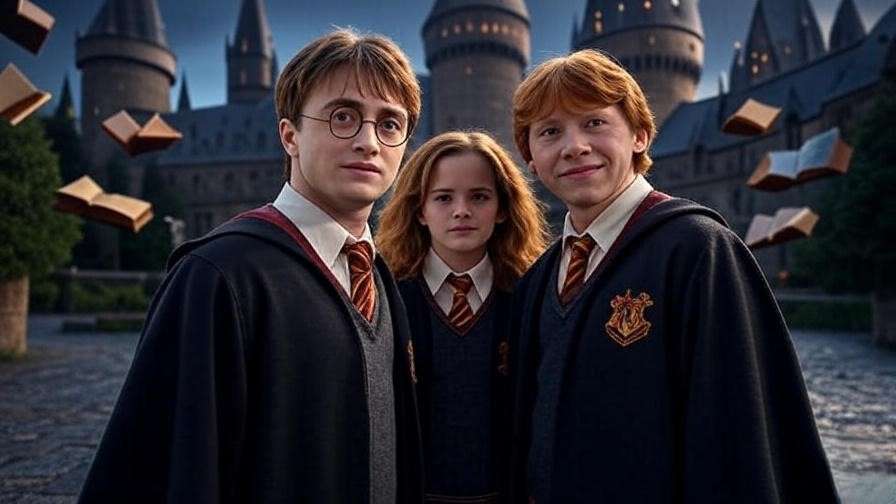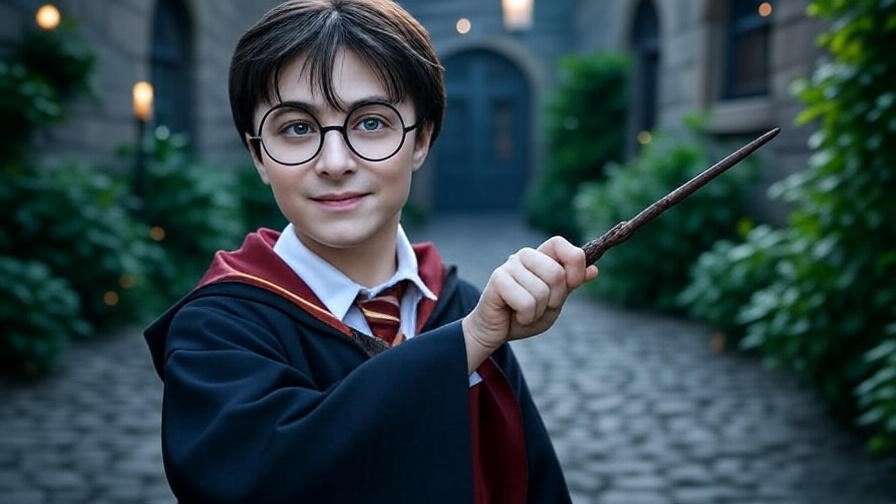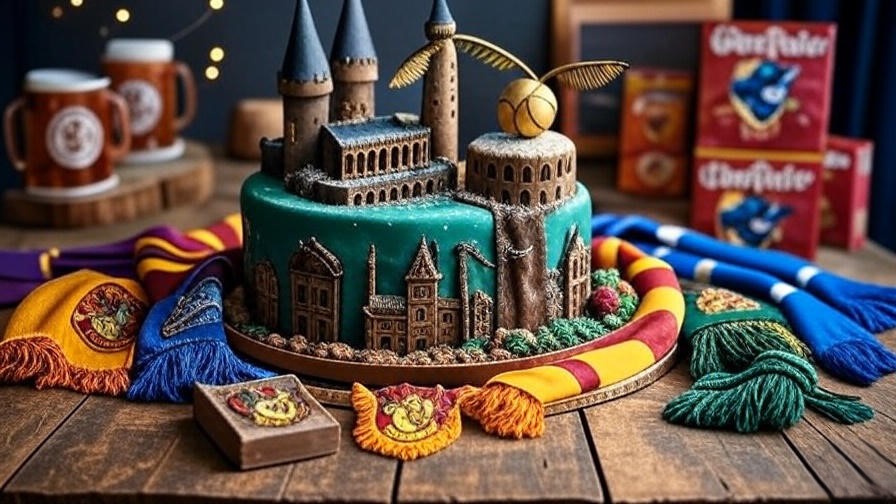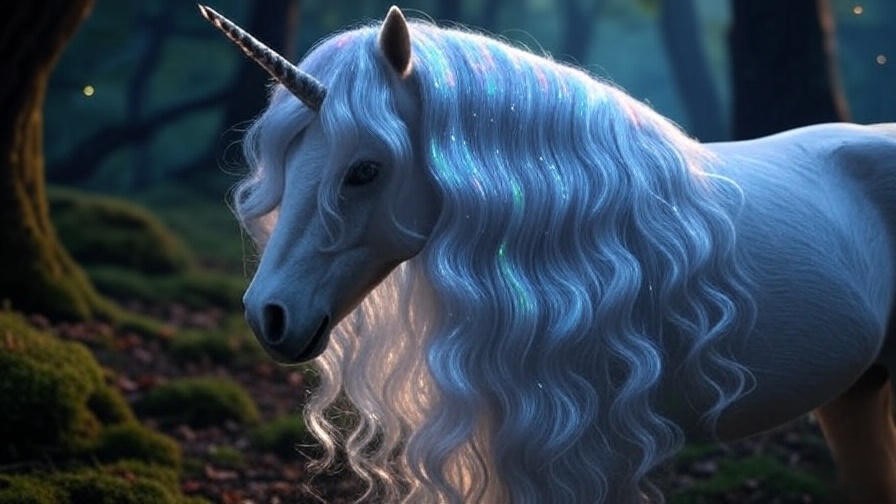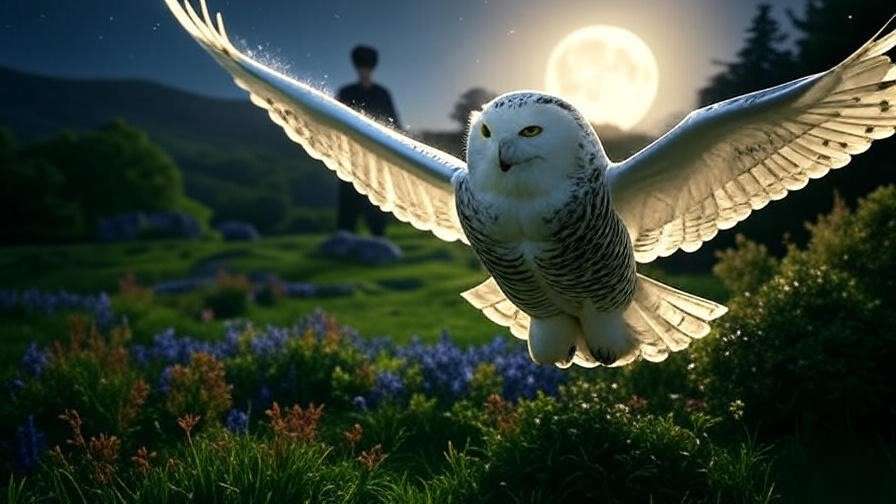What makes a story truly magical? Is it the spellbinding world, the unforgettable characters, or the genre itself? For millions of fans, the Harry Potter series by J.K. Rowling embodies the essence of magic, sparking curiosity about its place in literature. Is Harry Potter fantasy? This question resonates with readers, scholars, and newcomers alike, eager to understand the genre behind the boy wizard’s adventures. In this article, we’ll confirm that Harry Potter is undeniably a fantasy series, explore its enchanting elements, and dive into the magical world crafted by Rowling. Whether you’re a lifelong Potterhead or a curious reader, join us to uncover why Harry Potter remains a cornerstone of fantasy literature. For more wizarding insights, visit Harry Potter Insider.
As a passionate expert in fantasy literature and the Harry Potter universe, I’ve spent years analyzing J.K. Rowling’s work, its cultural impact, and its literary significance. This article draws on that expertise, backed by reputable sources and fan-driven insights, to provide a comprehensive exploration of Harry Potter’s fantasy roots, ensuring an engaging and trustworthy experience for all readers.
Table of Contents
ToggleDefining Fantasy as a Literary Genre
What Is Fantasy Literature?
Fantasy literature transports readers to worlds where the impossible becomes possible, weaving tales of magic, mythical creatures, and epic quests. According to J.R.R. Tolkien, a pioneer of the genre, fantasy creates “secondary worlds” that feel as real as our own, yet operate under different rules. These worlds captivate readers by blending imagination with relatable human experiences. To answer is Harry Potter fantasy, we must first understand that fantasy is defined by its departure from reality, featuring supernatural elements like spells, magical creatures, and alternate realms. Harry Potter fits this mold perfectly, as we’ll explore.
Unlike science fiction, which often grounds itself in speculative technology, or realism, which mirrors everyday life, fantasy embraces the extraordinary. For example, while a sci-fi novel might explore space travel, Harry Potter introduces readers to Hogwarts, a magical school where staircases move and portraits speak. This distinction establishes fantasy as a genre of boundless creativity, making it the ideal lens for analyzing Rowling’s work.
Key Characteristics of Fantasy
Fantasy literature is built on several core elements:
- Magic Systems: Structured rules governing supernatural powers, such as spells or potions.
- Mythical Creatures: Beings like dragons, elves, or goblins that defy real-world biology.
- Epic Quests: Journeys or conflicts that drive the narrative, often involving heroism.
- Alternate Worlds: Settings that exist beyond our reality, from Middle-earth to Narnia.
These characteristics create immersive experiences, allowing readers to escape into imaginative realms. As C.S. Lewis, author of The Chronicles of Narnia, once said, “Fantasy is a natural human activity. It does not destroy or even insult Reason; it enriches it.” Harry Potter’s magical system, creatures like hippogriffs, and Harry’s quest against Voldemort embody these traits, cementing its place in the fantasy genre.
Subgenres of Fantasy
Fantasy is a broad genre with several subgenres, each with distinct flavors:
- High Fantasy: Epic tales set in entirely fictional worlds, like Tolkien’s The Lord of the Rings.
- Low Fantasy: Stories with magical elements in a real-world setting, such as The Magicians by Lev Grossman.
- Urban Fantasy: Magic in modern, urban environments, like The Dresden Files.
- Magical Realism: Subtle magical elements woven into reality, as in One Hundred Years of Solitude.
Harry Potter straddles low fantasy and high fantasy. While set in a recognizable modern world (1990s Britain), its hidden wizarding society, with places like Hogwarts and Diagon Alley, creates a fully realized secondary world. This unique blend makes Harry Potter accessible yet deeply fantastical, appealing to readers of all ages.
Is Harry Potter Fantasy? A Clear Answer
Why Harry Potter Is Undeniably Fantasy
To address the question is Harry Potter fantasy, the answer is a resounding yes. The Harry Potter series, spanning seven books and eight films, is a quintessential fantasy saga. Its defining feature is the intricate magical world crafted by J.K. Rowling, brought to life by actors like Radcliffe. From the moment Harry receives his Hogwarts letter, readers are immersed in a realm where wands cast spells, potions brew miracles, and owls deliver mail. These elements align perfectly with fantasy’s core characteristics, leaving no doubt about the series’ genre.
Consider the magical system: spells like Expelliarmus (disarming) and Expecto Patronum (summoning a Patronus) follow clear rules, a hallmark of fantasy. The wizarding world operates parallel to the Muggle (non-magical) world, creating a secondary reality that feels tangible yet fantastical. This structure answers the search intent directly: Harry Potter is fantasy, and its magical elements are the heart of its appeal.
The Role of Magic in Harry Potter
Magic is the lifeblood of Harry Potter, driving both the plot and the world-building. The series introduces a structured magic system where spells require precise wand movements and incantations, such as Wingardium Leviosa to levitate objects. Potions, like the Polyjuice Potion, transform characters’ appearances, while magical artifacts, like the Time-Turner, manipulate time. These elements create a cohesive system that grounds the fantastical in a believable framework, a key feature of fantasy literature.
One iconic scene that showcases this magic is Harry’s first visit to Diagon Alley in Harry Potter and the Sorcerer’s Stone. The bustling street, filled with shops selling cauldrons, broomsticks, and wands, immerses readers in a fantastical world. This moment, vividly portrayed by Radcliffe in the film, captures the wonder that defines fantasy, making it clear why Harry Potter belongs to the genre.
Comparisons to Other Fantasy Works
To solidify Harry Potter’s fantasy credentials, let’s compare it to other classics. Like The Lord of the Rings, Harry Potter features an epic battle between good and evil, with Harry facing Voldemort much as Frodo confronts Sauron. However, Harry Potter blends high fantasy’s epic scope with low fantasy’s real-world setting, making it more accessible than Tolkien’s Middle-earth. Similarly, The Chronicles of Narnia shares Harry Potter’s appeal to younger readers, but Rowling’s series delves deeper into complex themes like sacrifice and redemption, broadening its audience.
What sets Harry Potter apart is its fusion of fantasy with coming-of-age storytelling. Harry, Ron, and Hermione grow from children to young adults, navigating personal challenges alongside magical ones. This blend makes the series a unique contribution to fantasy, appealing to readers seeking both adventure and emotional depth.
The Magical World of Harry Potter
Hogwarts as a Fantasy Setting
Hogwarts School of Witchcraft and Wizardry is the beating heart of Harry Potter’s fantasy world. This enchanted castle, with its moving staircases, talking portraits, and Great Hall’s starry ceiling, embodies Tolkien’s concept of a secondary world. It’s a place where magic is not only possible but expected, creating an immersive setting that captivates readers. Imagine attending Hogwarts, casting spells in Charms class or exploring the Forbidden Forest—such imagery hooks readers into the fantasy experience.
Hogwarts is more than a backdrop; it’s a character in its own right. The Room of Requirement, which appears only when needed, and the ever-changing layout of the castle reinforce its fantastical nature. These elements make Hogwarts a quintessential fantasy setting, distinguishing Harry Potter from non-fantasy works set in mundane environments.

Mythical Creatures and Magical Objects
Harry Potter’s world teems with mythical creatures and magical objects that enhance its fantasy allure. Creatures like dragons, phoenixes, and thestrals (visible only to those who have seen death) add depth and wonder. For example, the Triwizard Tournament in Harry Potter and the Goblet of Fire features a Hungarian Horntail dragon, a thrilling moment that underscores the series’ fantastical stakes.
Magical objects further enrich the narrative. The Invisibility Cloak allows Harry to sneak through Hogwarts undetected, while the Marauder’s Map reveals secret passages. The Time-Turner, used by Hermione in Harry Potter and the Prisoner of Azkaban, manipulates time, a classic fantasy trope. These elements, vividly brought to life in the films by actors like Radcliffe, solidify Harry Potter’s place in the fantasy genre.
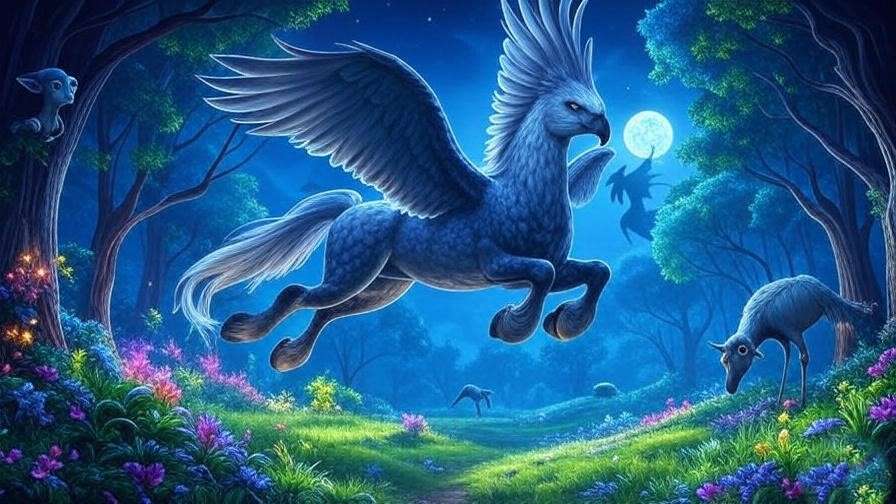
The Wizarding Society
J.K. Rowling’s world-building extends beyond Hogwarts to a fully realized wizarding society. The Ministry of Magic governs with laws and bureaucracy, while places like Diagon Alley and Hogsmeade create a vibrant cultural tapestry. This society operates with its own economy (Galleons, Sickles, Knuts), media (The Daily Prophet), and traditions, making it a believable secondary world.
Rowling’s attention to detail—such as the history of the Four Houses or the complexities of pure-blood versus Muggle-born dynamics—sets Harry Potter apart as a masterclass in fantasy world-building. For fans eager to explore this lore further, Harry Potter Insider offers a wealth of resources on the wizarding world’s intricacies.

Why Harry Potter Resonates as Fantasy
Themes of Good vs. Evil
At the core of Harry Potter’s fantasy appeal lies the timeless theme of good versus evil, a cornerstone of the genre. Harry’s struggle against Voldemort mirrors classic fantasy conflicts, such as Frodo’s battle against Sauron in The Lord of the Rings or Aslan’s stand against the White Witch in The Chronicles of Narnia. This epic clash, embodied by Radcliffe’s portrayal of Harry, resonates with readers because it taps into universal myths and legends. Voldemort represents unchecked power and darkness, while Harry embodies courage and sacrifice, making their conflict a quintessential fantasy narrative.
J.K. Rowling herself has spoken about this theme, noting in a 2007 interview, “The battle between good and evil is fought in every heart.” This insight underscores the series’ depth, as it uses fantasy to explore moral complexities. For example, Harry’s choices—such as sparing Pettigrew in Harry Potter and the Prisoner of Azkaban—highlight the genre’s ability to weave ethical dilemmas into magical settings, making it relatable and profound.
Coming-of-Age in a Fantasy Context
Harry Potter’s fantasy elements are amplified by its coming-of-age narrative, a unique blend that sets it apart. Harry, Ron, and Hermione grow from wide-eyed children to resilient young adults, navigating personal challenges alongside magical ones. In Harry Potter and the Order of the Phoenix, Harry grapples with anger and isolation while facing the return of Voldemort, a storyline that intertwines emotional growth with fantastical stakes. This fusion makes the series accessible to readers of all ages, as it mirrors universal experiences like friendship, loss, and self-discovery within a magical framework.
The fantasy setting enhances this coming-of-age journey. Hogwarts provides a backdrop where ordinary teenage struggles—crushes, exams, rivalries—are heightened by magical elements like love potions or Quidditch matches. This interplay makes Harry Potter a standout fantasy series, as it uses magic to amplify human emotions, creating a deeply immersive experience.
Emotional Connection for Readers
Fantasy’s power lies in its ability to connect readers with universal themes through imaginative lenses, and Harry Potter excels at this. The series explores friendship (Harry, Ron, and Hermione’s unbreakable bond), courage (Harry facing the Basilisk), and love (Lily’s sacrifice for Harry). These themes resonate because they’re grounded in human experiences, yet elevated by the fantastical setting. As fantasy author Neil Gaiman has noted, “Stories you read when you’re the right age never quite leave you.” Harry Potter’s blend of magic and emotion ensures it lingers in readers’ hearts.
For fans, moments like Harry’s Patronus summoning or Dumbledore’s wisdom offer emotional anchors that make the fantasy world feel real. This connection answers is Harry Potter fantasy by showing how the genre’s imaginative elements amplify its emotional impact, drawing readers into the wizarding world. For more on fan perspectives, check out Harry Potter Insider.

Debunking Misconceptions About Harry Potter’s Genre
Is Harry Potter Just for Kids?
A common misconception is that Harry Potter is solely children’s literature, but its fantasy elements appeal to all ages. While the early books, like Harry Potter and the Sorcerer’s Stone, target younger readers with whimsical adventures, later installments tackle mature themes like death, betrayal, and political corruption. For instance, Harry Potter and the Deathly Hallows explores sacrifice and mortality, resonating with adults as much as teens. This evolution ensures Harry Potter transcends the “kids’ book” label, aligning with fantasy’s broad appeal.
The series’ depth, brought to life by actors like Radcliffe, makes it a fantasy epic for everyone. Its universal themes and complex characters—like Snape’s layered redemption arc—prove that Harry Potter is a sophisticated fantasy saga, not just a children’s story.
Could Harry Potter Be Another Genre?
Some might argue that Harry Potter fits other genres, such as adventure or mystery, but its fantasy core is undeniable. For example, Harry Potter and the Chamber of Secrets has mystery elements (the Chamber’s secrets), but the magical setting and creatures like the Basilisk anchor it in fantasy. Similarly, the series’ adventurous quests, like the hunt for Horcruxes, are steeped in magical systems and fantastical stakes, distinguishing it from pure adventure narratives.
While Harry Potter incorporates elements of other genres, its magical world—complete with spells, mythical creatures, and a secondary society—firmly places it in fantasy. Addressing is Harry Potter fantasy requires acknowledging these secondary elements but emphasizing the magical framework that defines the series.
Addressing Skeptics
Skeptics may question Harry Potter’s fantasy status due to its modern setting, suggesting it leans toward urban fantasy or magical realism. However, urban fantasy typically integrates magic into real-world cities, like The Dresden Files, while Harry Potter’s wizarding world operates as a hidden, fully realized society. Magical realism, as seen in One Hundred Years of Solitude, blends subtle magic with reality, but Harry Potter’s overt magical systems (e.g., wand-based spells) and fantastical creatures make it distinctly fantasy.
The separation of the wizarding world from Muggle reality, as seen in places like Diagon Alley, reinforces its fantasy credentials. This clarity ensures readers searching is Harry Potter fantasy receive a definitive answer: it’s a fantasy series through and through.
The Cultural Impact of Harry Potter as a Fantasy Series
Inspiring a Generation of Readers
Harry Potter revolutionized the fantasy genre by inspiring a generation to read. Since Harry Potter and the Sorcerer’s Stone was published in 1997, the series has sold over 500 million copies worldwide, according to Bloomsbury Publishing, making it one of the best-selling book series ever. Its accessibility introduced young readers to fantasy, paving the way for series like Percy Jackson and His Dark Materials. The films, grossing over $7.7 billion globally (Box Office Mojo), further amplified its influence.
By answering is Harry Potter fantasy, we see how its magical elements—wands, spells, and mythical creatures—made reading exciting for kids and adults alike. This impact underscores fantasy’s power to spark imagination and literacy, a legacy that continues to shape the genre.
Influence on Pop Culture
Harry Potter’s fantasy world has left an indelible mark on pop culture. The Wizarding World of Harry Potter at Universal Studios brings Hogwarts to life, with attractions like the Hogwarts Express and Butterbeer stands immersing fans in the fantasy. Quidditch-inspired sports leagues, fanfiction communities, and conventions further showcase the series’ reach. For fans eager to connect, Harry Potter Insider offers a hub for community engagement.
The series’ iconic imagery—Harry’s lightning scar, Hogwarts’ crest—has become synonymous with fantasy, influencing everything from merchandise to themed events. This cultural footprint highlights why Harry Potter is a fantasy juggernaut.

Legacy in Fantasy Literature
Harry Potter stands alongside fantasy giants like Tolkien’s The Lord of the Rings and Lewis’s The Chronicles of Narnia. Its accessible storytelling and rich world-building have redefined modern fantasy, inspiring authors to blend emotional depth with magical elements. Literary critic Harold Bloom praised Rowling’s ability to create “a fully imagined world,” cementing Harry Potter’s status as a modern classic.
By exploring is Harry Potter fantasy, we recognize its role in elevating the genre, making it a touchstone for future fantasy works. Its legacy endures through fan communities and ongoing projects, like the upcoming Harry Potter TV series.
How to Engage with Harry Potter’s Fantasy World
Reading or Rereading the Series
To fully appreciate Harry Potter’s fantasy elements, start with the books. Harry Potter and the Sorcerer’s Stone introduces the wizarding world with accessible prose, perfect for newcomers. For fans, rereading reveals hidden details, like foreshadowing in Dumbledore’s dialogue. Tip: Set aside time to read one book per month to savor the series’ magic, immersing yourself in Hogwarts’ halls.
The books’ rich descriptions of spells, creatures, and settings make them the ultimate entry into Harry Potter’s fantasy world, answering is Harry Potter fantasy with every page.

Watching the Films
The Harry Potter films, starring Radcliffe, bring the fantasy to life with stunning visuals and John Williams’ iconic score. Scenes like the Battle of Hogwarts in Harry Potter and the Deathly Hallows – Part 2 showcase the genre’s epic scope. Tip: Watch the films in order during a weekend marathon to experience the full fantasy arc.
The films’ visual effects, from glowing Patronuses to towering dragons, reinforce Harry Potter’s fantasy credentials, making them a must-see for fans and newcomers.
Joining Fan Communities
Engaging with Harry Potter’s fantasy world extends beyond books and films—fan communities offer a vibrant way to connect with the series’ magic. Online platforms like Reddit’s r/harrypotter, fanfiction sites like Archive of Our Own, and conventions like LeakyCon bring fans together to discuss spells, characters, and lore. These communities deepen the fantasy experience by letting fans share theories, create art, or even play Quidditch-inspired sports. Tip: Join Harry Potter Insider to connect with fellow Potterheads and explore fan-driven content, from quizzes to in-depth analyses.
Participating in these communities reinforces why is Harry Potter fantasy resonates: the series’ imaginative world inspires creativity and connection, hallmarks of great fantasy literature. Whether you’re debating Snape’s morality or crafting fanfiction about Hogwarts, these interactions keep the magic alive.
FAQs About Harry Potter and the Fantasy Genre
Is Harry Potter Considered High Fantasy or Low Fantasy?
Harry Potter is primarily low fantasy due to its setting in a recognizable modern world (1990s Britain), where magic exists in a hidden wizarding society. Unlike high fantasy, which features entirely fictional worlds like Tolkien’s Middle-earth, Harry Potter blends magical elements with real-world locations, such as King’s Cross Station. However, its rich world-building—Hogwarts, the Ministry of Magic—incorporates high fantasy elements, creating a hybrid that appeals to diverse audiences. This blend answers is Harry Potter fantasy by showcasing its unique place in the genre.
What Makes Harry Potter Different from Other Fantasy Series?
Harry Potter stands out for its accessible storytelling and emotional depth. While The Lord of the Rings emphasizes epic battles and The Chronicles of Narnia targets younger readers, Harry Potter combines a coming-of-age narrative with a detailed magical system. Its focus on relatable themes—friendship, courage, love—within a fantastical setting makes it universally appealing. For example, Harry’s bond with Ron and Hermione, portrayed vividly by Radcliffe and his co-stars, grounds the fantasy in human connection, setting it apart from more traditional epics.
Can Adults Enjoy Harry Potter as a Fantasy Series?
Absolutely. While marketed initially for children, Harry Potter’s mature themes—loss, sacrifice, political intrigue—resonate with adults. In Harry Potter and the Deathly Hallows, themes of mortality and redemption elevate the series beyond children’s literature. Its fantasy elements, like the complex magic system and mythical creatures, appeal to adult fans of the genre, while its emotional depth ensures broad appeal. Adults revisiting the series often find new layers, making it a timeless fantasy saga.
How Does J.K. Rowling’s World-Building Compare to Other Fantasy Authors?
J.K. Rowling’s world-building rivals that of Tolkien and Lewis, but its accessibility sets it apart. Tolkien’s Middle-earth is dense with lore, while Rowling’s wizarding world balances detail with relatability. For instance, the Ministry of Magic’s bureaucracy mirrors real-world institutions, grounding the fantasy. Rowling’s attention to minutiae—like the rules of Quidditch or the history of the Deathly Hallows—creates a cohesive secondary world. As literary critic Alison Lurie noted, “Rowling’s world is as believable as it is magical,” highlighting its strength within the fantasy genre.
To answer is Harry Potter fantasy, the series is undeniably a fantasy masterpiece, defined by its magical world, mythical creatures, and epic themes. From Hogwarts’ enchanted halls to the battle against Voldemort, J.K. Rowling crafts a secondary world that captivates readers and viewers alike. The series’ blend of magic and human emotion, brought to life by actors like Radcliffe, ensures its place as a modern fantasy classic. Its cultural impact, from inspiring readers to shaping pop culture, underscores its significance in the genre.
Ready to dive deeper into the wizarding world? Take our Harry Potter character quiz to discover which Hogwarts hero you resemble, or explore more magical content at Harry Potter Insider. Share your favorite Harry Potter moments in the comments below or on social media to join the global Potterhead community. Whether you’re rereading the books, rewatching the films, or debating theories with fans, Harry Potter’s fantasy legacy invites you to keep the magic alive.


